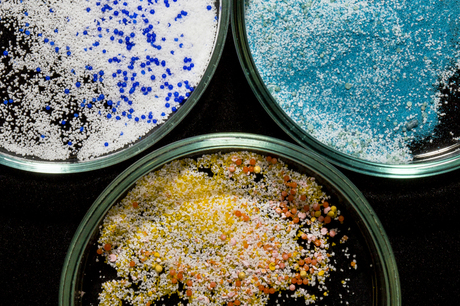Microbeads proved to contaminate fish

As pressure mounts for a global ban on microbeads, researchers from RMIT University and Hainan University have for the first time shown that these tiny polyethylene particles directly contaminate fish with toxic chemical pollutants.
Often used in cosmetic products such as skin exfoliators and toothpastes, trillions of microbeads wash into rivers, lakes and oceans every day. Here, they act like a magnet for pollution in water and pose a particular risk to fish, who mistake them for food.
“All plastic attracts and concentrates toxic chemicals when in water, but this problem is compounded with microbeads because of their size and surface area,” said lead investigator Dr Bradley Clarke, from RMIT’s Centre for Environmental Sustainability and Remediation.
Dr Clarke and his team have now provided the first conclusive evidence that microbeads are capable of leaching toxic chemical pollutants into fish that eat them. The results were published in the journal Environmental Science & Technology.
In a controlled laboratory study, Murray River rainbow fish were fed microbeads sourced from a commercial facial cleanser. These were spiked with environmentally relevant concentrations of polybrominated diphenyl ethers (PBDEs) — pollutants known to biomagnify up the food chain in marine animals.

The exposed fish had significantly higher PBDE concentrations than the control group after just 21 days — 5.03 nanograms of PBDE in every gram of fish tissue compared to 1.47 for the control group — with continued exposure resulting in increased accumulation of the pollutants. The study showed that up to 12.5% of PBDEs on the microbeads leached into the tissue of the fish — with the potential to pass on this contamination to any human that consumes said fish.
“Our research shows for the first time that persistent organic pollutants accumulate in the tissue of fish that eat microbeads,” said Dr Clarke.
“Our next step is to determine the implications of our findings on microbeads for public health, working out the significance of this exposure pathway and precisely measuring how much pollution could be entering this human food chain.”
The US Government has passed laws to ban the use of microbeads from mid-2017, while the Australian Government is working with companies towards a voluntary phase-out by July 2018.
Coffee concrete wins national research award
RMIT University inventors have won an award at Universities Australia's Shaping Australia...
Honeywell supports building decarbonisation in Singapore
The Singapore-based Centre of Excellence will pilot technologies that deliver a scalable...
Energy bill relief plan to ease cost-of-living pressure
Rewiring Australia has welcomed the Permanent Energy Bill Relief Plan, said...








